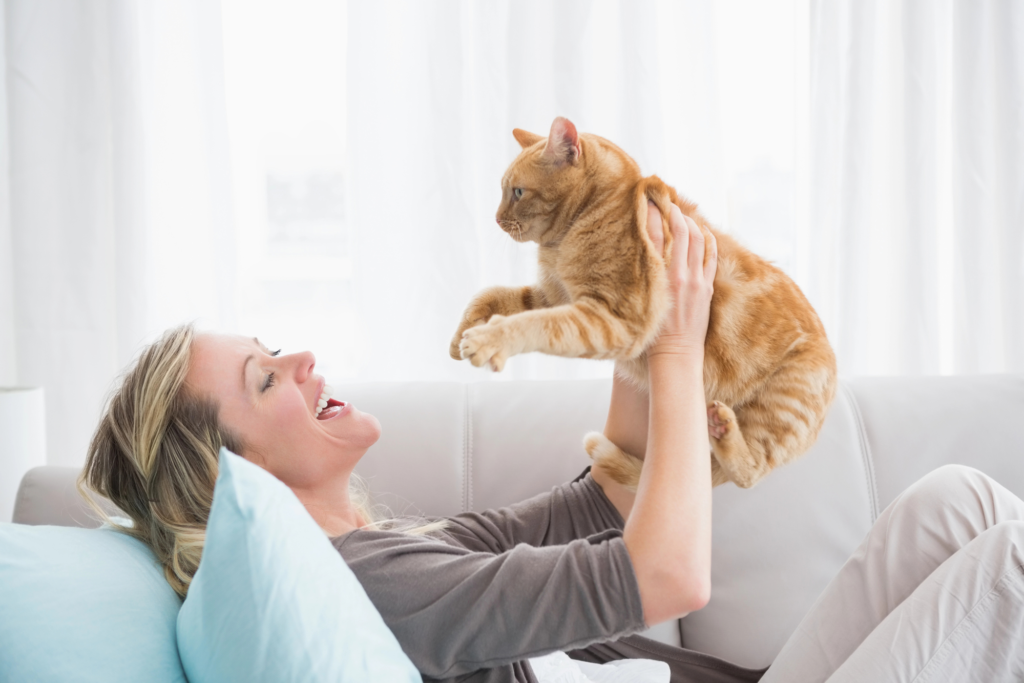Cats are intelligent creatures capable of learning and adapting their behavior through positive reinforcement. By using rewards and reinforcement strategies, you can effectively encourage desirable behaviors and strengthen the bond with your feline friend. Here’s a guide to understanding and implementing effective methods to promote positive behavior in your cat.

1. Understanding Positive Reinforcement
Positive reinforcement involves rewarding desirable behavior to increase the likelihood that the behavior will be repeated. Unlike punishment, which can create fear and stress, positive reinforcement focuses on encouraging good behavior through rewards and encouragement.
2. Identify What Motivates Your Cat
Types of Rewards:
Each cat has different preferences when it comes to rewards. Common motivators include:
- Treats: Small, tasty treats are highly effective. Choose high-value treats that your cat loves and reserve them for training and positive reinforcement.
- Playtime: Interactive toys, such as feather wands or laser pointers, can be used as rewards. If your cat is more motivated by play, use it as a reward for positive behavior.
- Affection: Many cats enjoy physical affection, such as petting or cuddling. Use gentle strokes or lap time as a reward for good behavior.
Discover Preferences:
Observe your cat to determine their favorite rewards. This could be a specific type of treat, a favorite toy, or particular forms of interaction. Tailoring rewards to your cat’s preferences will make reinforcement more effective.
3. Implementing Training Techniques
Immediate Rewards:
Timing is crucial in positive reinforcement. Provide the reward immediately after the desired behavior occurs to help your cat connect the behavior with the reward. This immediate reinforcement makes it clear which action is being rewarded.
Consistency:
Be consistent with your reinforcement. Use the same rewards and cues for specific behaviors each time. Consistency helps your cat learn what behaviors are desired and reduces confusion.
Use Commands and Cues:
Incorporate verbal commands or cues to signal the desired behavior. For example, use commands like “sit” or “come” during training sessions. Reinforce the behavior with a reward as soon as your cat follows the command. This helps establish a clear association between the command and the behavior.
4. Reinforcing Positive Behavior

Reward for Good Behavior:
Encourage and reward good behavior, such as using the litter box correctly, scratching appropriate surfaces, or coming when called. Offer a reward immediately to reinforce the behavior and increase the likelihood that it will be repeated.
Gradual Training:
Start with simple behaviors and gradually increase the complexity of tasks as your cat becomes more comfortable with training. Break down complex behaviors into smaller steps and reward your cat for each step they successfully complete.
Prevent and Redirect Negative Behavior:
While focusing on positive reinforcement, address negative behavior by redirecting it. For example, if your cat is scratching the furniture, redirect them to a scratching post and reward them when they use it. This approach prevents undesirable behaviors and encourages alternative, positive actions.
5. Avoid Common Mistakes
Avoid Overuse of Treats:
While treats are effective, overuse can lead to weight gain or a loss of interest in training. Use treats sparingly and balance them with other forms of rewards, such as play or affection.
Don’t Use Punishment:
Avoid using punishment or negative reinforcement, as it can create fear and anxiety. Focus on positive interactions and rewards to encourage good behavior and strengthen your relationship with your cat.
Be Patient and Flexible:
Training takes time, and each cat learns at their own pace. Be patient and flexible in your approach. If a particular reward or technique isn’t working, try different rewards or adjust your training methods.
6. Building a Strong Bond
Positive reinforcement not only helps in encouraging good behavior but also strengthens the bond between you and your cat. By engaging in training sessions and providing rewards, you create a positive and trusting relationship with your feline friend.
Interactive Sessions:
Incorporate training sessions into your daily routine as an opportunity for bonding. Spend quality time with your cat through training, play, and affection to build trust and improve your relationship.
Conclusion
Encouraging positive behavior in your cat through rewards and reinforcement is an effective and humane approach to training. By understanding what motivates your cat, implementing consistent training techniques, and reinforcing good behavior with immediate rewards, you can foster a well-behaved and happy feline companion. With patience and positive interactions, you can create a harmonious environment where both you and your cat thrive.


